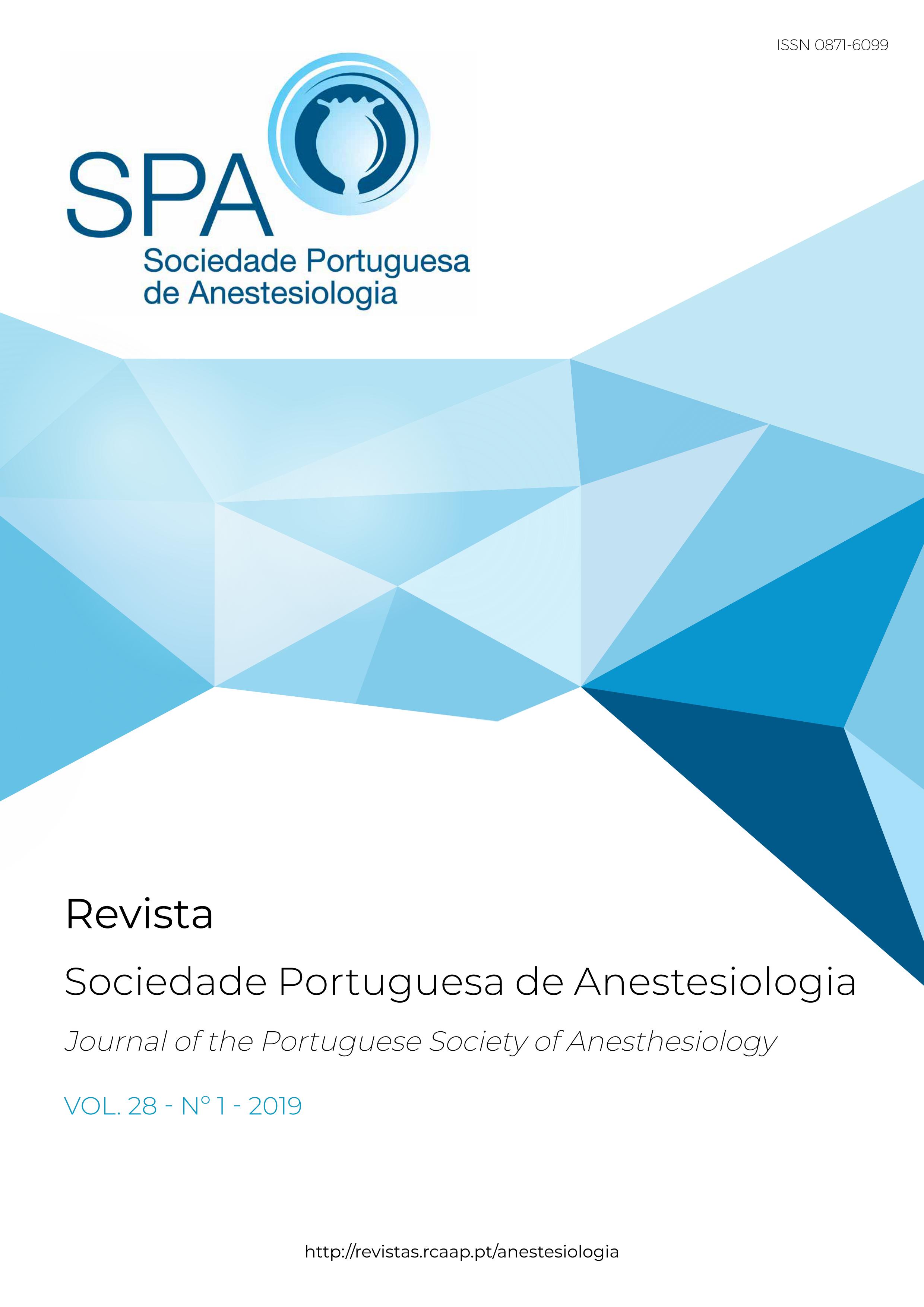Subcutaneous Cervical Emphysema After Labour Epidural Analgesia:
A Clinical Case of an Uncommon Complication
Keywords:
Analgesia, Epidural; Analgesia, Obstetrical; Mediastinal Emphysema; Spontaneous Subcutaneous EmphysemaAbstract
The authors report a rare case of iatrogenic subcutaneous cervical emphysema after lumbar epidural catheter insertion for labour analgesia.
Although lumbar epidural analgesia is the gold standard in labour analgesia, some complications may occur. Subcutaneous emphysema is a rare complication following identification of the epidural space with loss-of-resistance technique with air. Being usually a self-limited condition, the treatment is conservative. Its resolution is dependent on the amount of air trapped and usually resolves in a few days.
One way to avoid this complication is the use of saline solution in the loss of resistance technique for identification of the epidural space. If loss of resistance to the injection of air is to be used, it is necessary to adopt some preventive measures.
Downloads
References
2. Beilin Y, Arnold I, Telfeyan C, Bernstein HH, Hossain S. Quality of analgesia when air versus saline is used for identification of the epidural space in the parturient. Regional Anesthesia and Pain Medicine. 2000;25:596-599.
3. Antibas PL, do Nascimento Junior P, Braz LG, Vitor Pereira Doles J, Módolo NS, El Dib R. Air versus saline in the loss of resistance technique for identification of the epidural space. Cochrane Database Syst Rev. 2014;7:CD008938.
4. Laman EN, McLeskey CH. Supraclavicular subcutaneous emphysema following lumbar epidural anesthesia. Anesthesiology. 1978;48:219-221.
5. Wang JC, Tsai SH, Liao WI. Pneumocephalus after epidural anesthesia in an adult who has undergone lumbar laminectomy. J Neurosurg Anesthesiol. 2014;26:261-3.
6. Prober A, Tverskoy M. Soft tissue emphysema associated with epidural anesthesia. Am J Roentgenol. 1987;149:859-60.
7. Jackson KE, Rauck RL. Suspected venous air embolism during epidural anesthesia. Anesthesiology. 1991;74:190-1.
8. Saberski LR, Kondamuri S, Osinubi OYO. Identification of the epidural space: is loss of resistance to air a safe technique? A review of the complications related to the use of air. Regional Anesthesia. 1997;22(1):3-15.
9. Rozenberg B, Tischlar S, Glick A. Abdominal subcutaneous emphysema: An unusual complication of lumbar epidural block. Can J Anaesth. 1988;35:325.
10. Carter MI. Cervical surgical emphysema following extradural analgesia. Anesthesia. 1984;39:1115-1116.
Downloads
Published
How to Cite
Issue
Section
License
Articles are freely available to be read, downloaded and shared from the time of publication.
The RSPA reserves the right to commercialize the article as an integral part of the journal (in the preparation of reprints, for example). The author should accompany the submission letter with a declaration of copyright transfer for commercial purposes.
Articles are published under the terms of the Creative Commons Attribution Non-Commercial License (CC BY-NC).
After publication in RSPA, authors are allowed to make their articles available in repositories of their home institutions, as long as they always mention where they were published.


